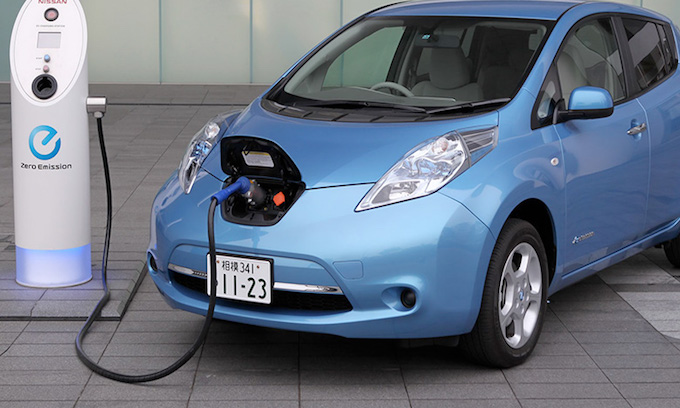Democratic presidential hopefuls and automakers are betting big on new technologies to rid cars of fossil fuels and field self-driving vehicles.
Cars and trucks account for about half of the petroleum consumed in the United States. Joe Biden promises to dramatically reduce carbon emissions by focusing federal procurement on electric autos to accelerate battery development and creating a national network of 500,000 charging stations.
Among Democrats, his proposals are more palatable than those of candidates embracing Alexandria Ocasio-Cortez’s “Green New Deal” and are likely where public policy is headed.
Even if a more extreme Democrat wins the presidency, he or she will have to deal with a Republican Senate or garner support from enough Republican senators to reach the 60 votes necessary to pass major legislation. Compromise could put America on a track to match Chinese and European initiatives to put more electric vehicles on the road.
If President Trump holds on, most voters still want something done about climate change, and any kind of infrastructure package will require movement in Mr. Biden’s direction.
Electric cars predate gas-powered vehicles by 50 years, and were sold commercially through the 1930s. As now, the slow progress of battery technology permitted the internal-combustion engine to outperform in terms of power, capacity, recharge time and cost.
Even with limited range and unacceptable recovery times for intercity trips, power packs account for 35 percent to 50 percent of current vehicle costs. Contemporary batteries are a combination of expensive cobalt, lithium, manganese and nickel. To increase capacity, engineers are tinkering with boosting nickel content but among stability challenges, it can get extremely hot and cause fires.
Engineers have been grappling with battery problems for more than a century, and this may be the old story of the man walking half way to the wall, over and over but never reaching his goal. The theoretic limits of battery chemistry may put a durable, inexpensive battery that can power a decent size SUV 400 miles and recover quickly beyond reach.
Most daily commutes and errands are less than 100 miles, and plug-in hybrids with modest batteries would eliminate gasoline for workdays and most weekends. Automakers already offer a wide range of plug-ins, but the economics work better in sedans than heavy SUVs. If the president in 2021 wants to move carbon out of our energy system, then tougher fuel economy standards would likely make a reasonably spacious, hybrid sedan ubiquitous.
The first automakers who built profitable, durable businesses were not the carriage makers they displaced, and batteries and electric motors are not among the strategic competencies of automakers.
Vehicle manufacturers will be consumers and assemblers of the core components, and automakers are banking on self-driving vehicles to create revenue streams, for example from continuous software updates, to remain relevant and bolster bottom lines.
The dominant attraction of autonomous drive is safety — reducing human error — and enabling car services like Uber to become profitable by replacing drivers with remote operators who manage fleets of vehicles. However, at a fraction of the cost fully autonomous drive vehicles, advanced driver assistance programs like automatic emergency breaking, which utilizes camera-object recognition, radar-laser detection and the like, will be in nearly all new cars soon. AEB will reduce rear-end crashes, injuries and property damage by 80 percent.
Taking the automobile the rest of way to fully autonomous drive — and without the kind of breakdowns that are common for today’s auto dashboards — will cost many multiples of AEB and similar systems with only small added safety gains.
Recently, I took Uber 2.2 miles from the Lincoln Center to a restaurant on Second Avenue. The fare was $17.08 and New York Mayor Bill de Blasio took $4.21 in various fees and taxes, leaving $12.87 for the driver, gas and depreciation of the vehicle and Uber’s hailing service. The driver’s wage could be no more than 40 percent or about $5.15. Out of that, it will be highly problematic for Uber to squeeze the cost of developing truly autonomous drive software, profits for the carmakers and enough margin swing in its hailing service into the black.
New cars will become much safer very fast — but drivers are not going away — and gasoline still will be pumped. Much less of it though, if plug-in hybrid with 100-mile batteries were deployed to eliminate gasoline for all but long trips to the beach.
• Peter Morici is an economist and business professor at the University of Maryland, and a national columnist.
© Copyright (c) 2019 News World Communications, Inc.
—-
This content is published through a licensing agreement with Acquire Media using its NewsEdge technology.



















Recent Comments